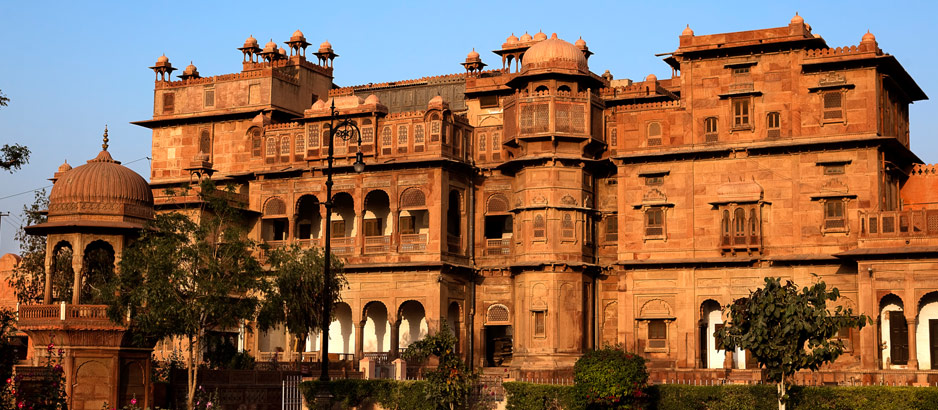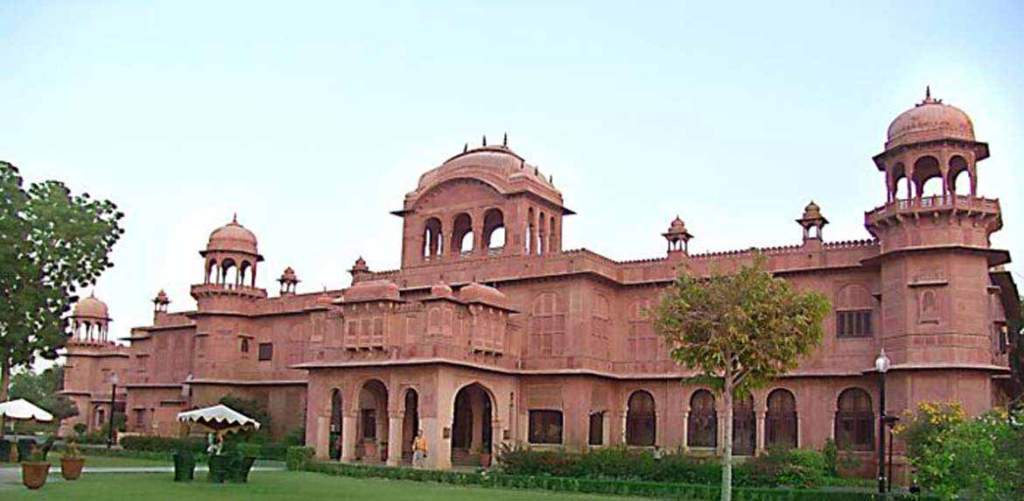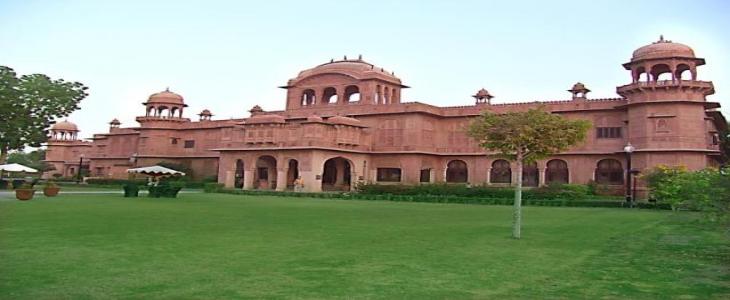Bikaner is home to one of the only two models of the biplane used by the British during World War I. They were presented by the British to Maharaja Ganga Singh, then ruler of the city. Another unique aspect about Bikaner are the sand dunes that are scattered throughout the district, especially from the north-east down to the southern area. Bikaner is situated in the northern region of Rajasthan. One of the earlier established cities, Bikaner still displays its ancient opulence through palaces and forts, built of red sandstone, that have withstood the passage of time. The city boasts of some of the world’s best riding camels and is aptly nicknamed ‘camel country’. It is also home to one of the world’s largest camel research and breeding farms; as well as being known for having its own unique temple dedicated to Karni Mata at Deshnok, called the Rats Temple. The origins of Bikaner can be traced back to 1488 when a Rathore prince, Rao Bikaji, founded the kingdom. Legend has it that Bikaji, one of Rao Jodhaji’s five sons, left his father’s Durbar in annoyance after an insensitive remark from his father, the illustrious founder of Jodhpur. Bikaji travelled far and when he came upon the wilderness called Jangladesh, he decided to set up his own kingdom and transformed it into an impressive city.
Junagarh is an impregnable bastion that holds the distinction of having never been captured. It was constructed in 1588 AD by Raja Rai Singh, one of Emperor Akbar’s most distinguished generals. The fort complex houses some magnificent palaces constructed in red sandstone and marble and visitors can feast their eyes on an attractive assortment of courtyards, balconies, kiosks and windows.

Maharaja Ganga Singh commissioned the construction of this majestic palace. This architectural marvel is made entirely of red sandstone and was built in 1902 to commemorate his father, Maharaja Lal Singh. The design was conceptualised by Sir Swinton Jacob, who created this oriental fantasy by blending Rajputana, Islamic and European architecture.

Described as the best museum in the State, the museum contains a rich display of archaeological artefacts from Harappa and the early Gupta periods. There are separate sections for paintings, arts and craft, woven carpets, clay pottery, ancient coins and Rajput weaponry.
Laxmi Niwas Palace was the residence of the king of Bikaner, Maharaja Ganga Singh. Built between 1898 and 1902 by British architect Sir Samuel Swinton Jacob, this structure displays an Indo-Saracenic architectural style. It is now a luxury hotel.
Located in the great Junagarh Fort, this museum hosts royal costumes, textiles and accessories of Rajasthani royalty. The ‘Poshaks’ (garments worn by ladies) are a reminder of the now lost craft of traditional designs, styles and workmanship. The family portraits on display narrate a story about how changing cultural settings influenced the style of immortalising the former rulers.
KARNI MATA TEMPLE, DESHNOKE :-
Popularly known as the Karni Mata Temple, this temple is the most called upon tourist attractions in Bikaner. The temple is dedicated to Karni Mata, who the locals believe is an incarnation of Goddess Durga, the protective Mother Goddess in Hindu religion. Karni Mata was a Hindu warrior sage from the Charan caste, who lived in the fourteenth century. Living the life of an ascetic, Karni Mata was highly revered by the locals and earned many followers too. Having received requests from the Maharajas of Jodhpur and Bikaner, she even laid the foundation stones of the Mehrangarh and Bikaner Forts. Although there are many temples dedicated to her, this temple in the town of Deshnoke at a distance of 30 kilometers from Bikaner is the mostly widely recognized.
Best Places To Visit In Bikaner City
Rajasthan Summer Tour Packages
